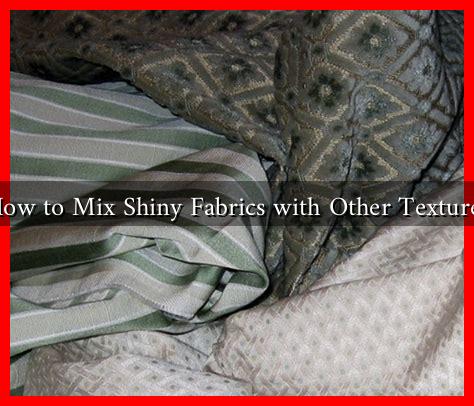-
Table of Contents
How to Mix Shiny Fabrics with Other Textures
Fashion is an ever-evolving art form that allows individuals to express their personality and creativity. One of the most exciting ways to elevate your style is by mixing shiny fabrics with other textures. This technique can create visually stunning outfits that stand out in any setting. In this article, we will explore how to effectively combine shiny fabrics with various textures, providing you with tips, examples, and insights to enhance your wardrobe.
Understanding Shiny Fabrics
Shiny fabrics, such as satin, silk, and sequins, are known for their reflective qualities and luxurious appearance. These materials can add a touch of glamour to any outfit but can also be challenging to style. Here are some common types of shiny fabrics:
- Satin: A smooth, glossy fabric often used in evening wear.
- Silk: A natural fiber known for its luster and softness.
- Sequins: Small, shiny discs sewn onto fabric to create a sparkling effect.
- Lurex: A metallic yarn that adds a shimmering effect to knitwear.
Choosing Complementary Textures
When mixing shiny fabrics with other textures, the key is to create balance. Here are some textures that pair well with shiny fabrics:
- Matte Fabrics: Fabrics like cotton, linen, or wool can provide a contrast to shiny materials, grounding the look.
- Knits: Chunky knits can soften the sleekness of shiny fabrics, making the outfit more approachable.
- Denim: The ruggedness of denim can create an interesting juxtaposition with shiny materials.
- Leather: The edginess of leather can enhance the glamour of shiny fabrics, creating a chic look.
Tips for Mixing Shiny Fabrics with Other Textures
To successfully mix shiny fabrics with other textures, consider the following tips:
- Limit the Shine: If you’re wearing a shiny top, opt for matte bottoms to avoid overwhelming the outfit.
- Layer Wisely: Use layers to create depth. For example, a shiny blouse under a chunky knit cardigan can add dimension.
- Accessorize Thoughtfully: Choose accessories that complement the textures. A matte leather bag can balance a shiny dress.
- Play with Colors: Mixing different colors can enhance the visual interest. A shiny gold top paired with a deep burgundy skirt can be striking.
Case Studies: Successful Combinations
Many fashion icons and designers have mastered the art of mixing shiny fabrics with other textures. Here are a few notable examples:
- Rihanna: Known for her bold fashion choices, Rihanna often pairs sequined tops with distressed denim, creating a perfect blend of glam and casual.
- Chanel Runway Shows: Chanel frequently showcases models in shiny tweed jackets paired with matte silk skirts, demonstrating how to balance textures elegantly.
- Street Style: Influencers on platforms like Instagram often mix shiny fabrics with oversized sweaters or leather pants, showcasing versatility and creativity.
Statistics on Fashion Trends
According to a recent survey by the Fashion Institute of Technology, 68% of consumers are more likely to purchase clothing that features a mix of textures. This statistic highlights the growing trend of texture mixing in fashion, making it essential for anyone looking to stay stylish.
Conclusion
Mixing shiny fabrics with other textures can elevate your style and create visually captivating outfits. By understanding the characteristics of shiny fabrics, choosing complementary textures, and following practical tips, you can master this fashion technique. Remember to draw inspiration from fashion icons and current trends, and don’t be afraid to experiment with your wardrobe. With the right combinations, you can achieve a look that is both chic and unique.
For more fashion tips and inspiration, visit Vogue.

